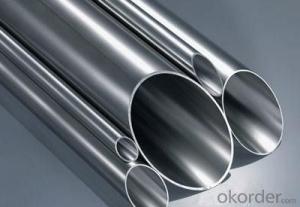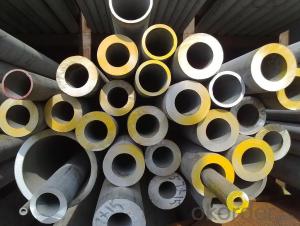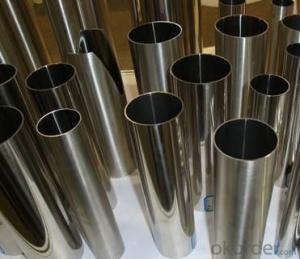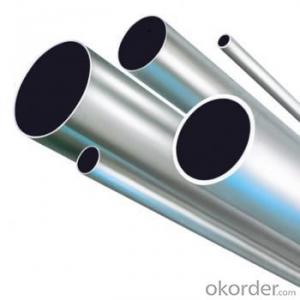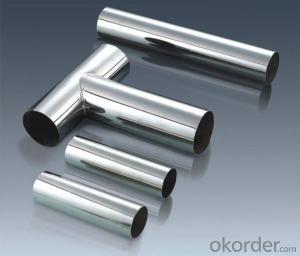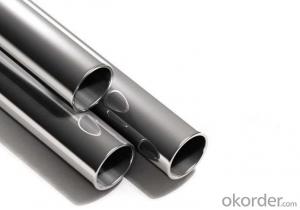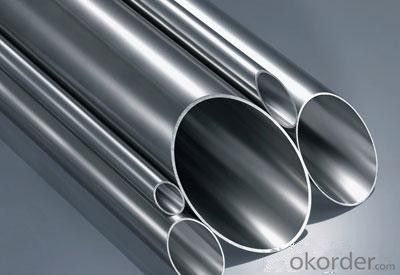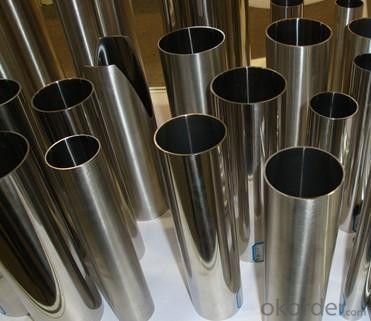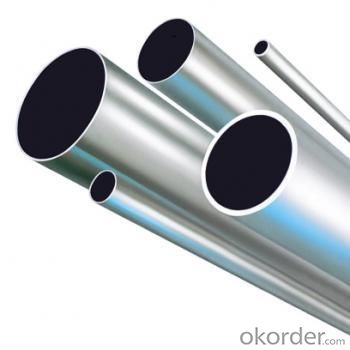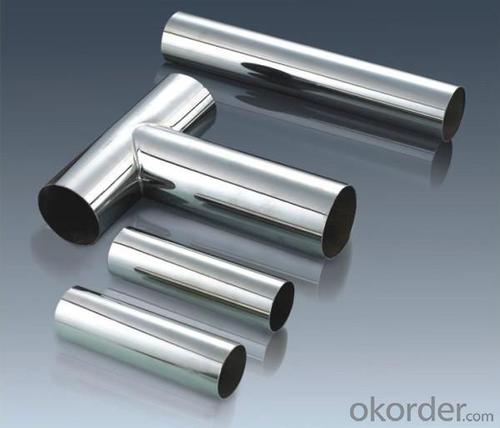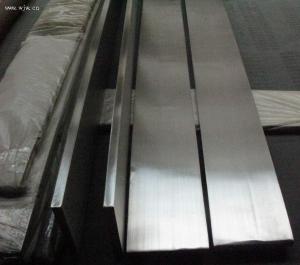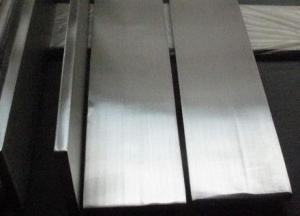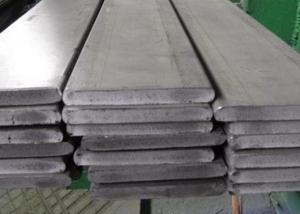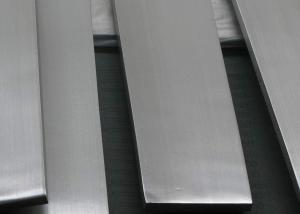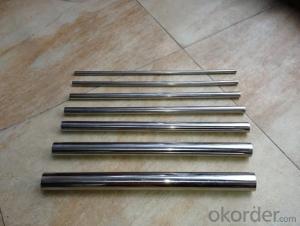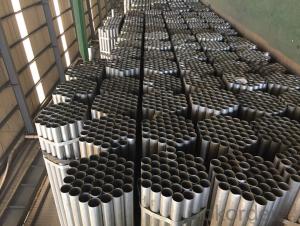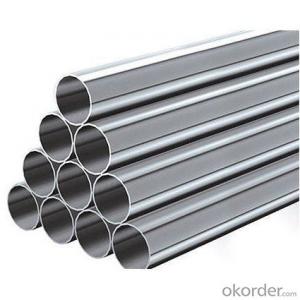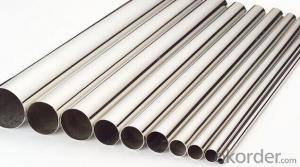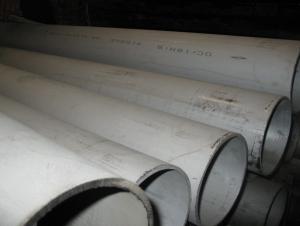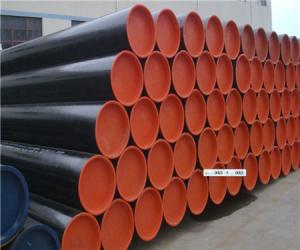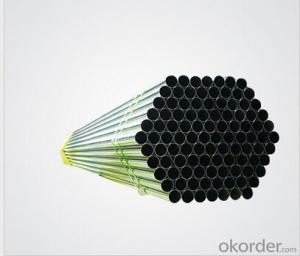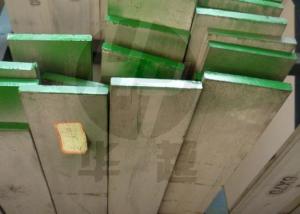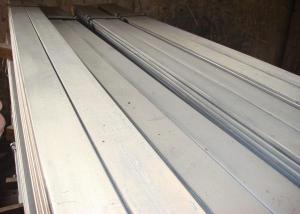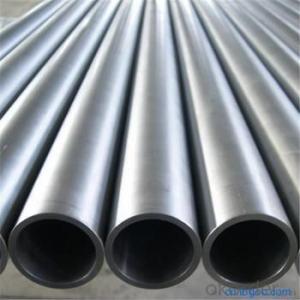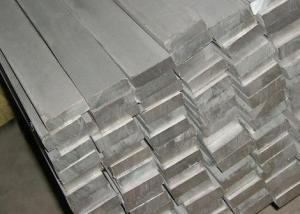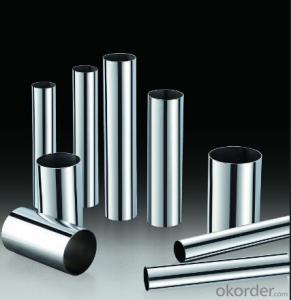A269 Seamless Stainless Steel Pipe
- Loading Port:
- China main port
- Payment Terms:
- TT OR LC
- Min Order Qty:
- 5 m.t.
- Supply Capability:
- 100000 m.t./month
OKorder Service Pledge
OKorder Financial Service
You Might Also Like
Specification
A269 Seamless Stainless Steel Pipe
1. Material | TP304/304L, 316/316L, 310S, 317L, 321, 347H,etc. |
S31803, 32750, etc. | |
2. Standard | ASTM, ASME, DIN, EN, ISO,JIS, GOST, etc. |
3. Type | Seamless |
4. Size range | OD: from 6mm to 1000mm (NPS from 1/8'' to 40'') |
WT: from 0.7mm to 38mm (Schedule from 5S to XXS) | |
Length: fix length or un-fix length, Max 30meters | |
5. Produce process | Pilgering and cold drawn |
6. Surface process | Pickling and annealing |
AP tube | |
BA tube | |
7. Marking | JW, GRADE, seamless, STANDARD, SIZE, HT NO. |
8. Package | Bundles with waterproof cloth outside. |
or plywood box. | |
9. Min order quantity | 500 KG |
10. Sample | Yes |
11. OEM accepted | Yes |
12. Production capacity | 300 tons per month |
13. Payment term | T/T or L/C. |
14. Certificate | ISO 9001, PED |
15. Third party ertificate | BV, LR, SGS, TUV, CCS, ABS, etc. |
Speciality and Advantages
Our company has been dedicated to producing stainless steel seamless pipe since 2003, owning complete producing technology and abundant managing experience.
The raw material such as mother tube, round bar we use is from Chinese biggest and well-known steel mill: Walsin Steel and Yongxing Steel.
We have advanced NDT equipments for the tests such as Eddy Current test, Ultrasonic test, Hydraulic test and so on.
We have ISO 9001 and PED certificate, and the Third Party Inspection Certificates such as TUV, BV, Lloyd’s, SGS, etc, also can be provided according to customers’ requirements,
Wooden case package which is strong and suitable for sea transportation is our main method to pack the pipes. And the economical packing method such as packed in bundles is also welcomed by some customers.
The tolerance control we use is D4/T4 (+/-0.1mm) on both inside and outside Diameter and Wall Thickness, which is much higher than international standard ASTM, DIN.
The surface condition is one of our main advantages: in order to meet different requirements for surface condition, we have annealing and pickling surface, bright annealing surface, OD polished surface, OD & ID polished surface etc.
In order to keep the inside surface of pipe clean and make it free from deburring, our company develops the unique and special technology --- Sponge Washing with high pressure.
We have complete after-sale service to deal with the problems in time.
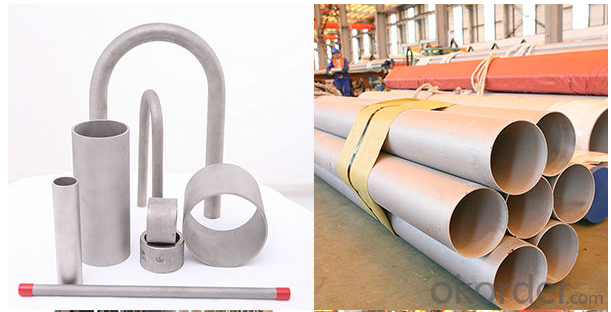
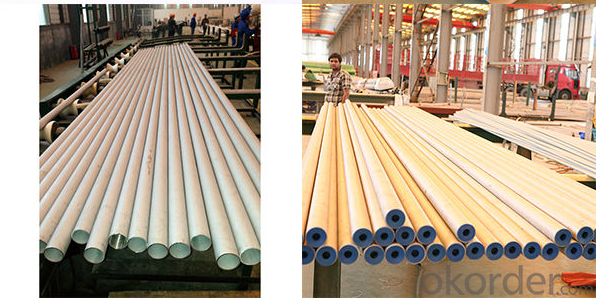
- Q: Can stainless steel pipes be insulated with Teflon?
- Yes, stainless steel pipes can be insulated with Teflon. Teflon, also known as polytetrafluoroethylene (PTFE), is a versatile material that is commonly used for its nonstick properties and resistance to heat and chemicals. It is an excellent choice for insulating stainless steel pipes as it can provide thermal insulation, protect against corrosion, and prevent heat loss or gain. Teflon insulation can also reduce condensation or moisture buildup on the pipe surface. Additionally, Teflon's low friction coefficient allows for smooth flow of fluids through the pipes, making it suitable for a variety of applications in industries such as food processing, pharmaceuticals, and chemicals.
- Q: Are stainless steel pipes suitable for chemical processing?
- Indeed, stainless steel pipes are well-suited for chemical processing purposes. Renowned for their exceptional resistance to corrosion, stainless steel pipes prove to be an optimal choice when it comes to managing a wide range of chemicals in various processing industries. These pipes exhibit resistance not only towards organic and inorganic chemicals, but also acids, alkalis, and solvents. Consequently, they can endure high temperatures and pressures, thus demonstrating their aptitude for handling aggressive chemicals and upholding process integrity. Moreover, stainless steel boasts hygienic attributes, as it is impermeable and effortless to clean, thereby ensuring the purity of the chemicals undergoing processing. Furthermore, stainless steel pipes possess an extended lifespan and necessitate minimal maintenance, thus presenting a cost-effective solution for chemical processing applications.
- Q: Is galvanized steel pipe stainless steel pipe?
- Not galvanized pipe, but the surface of the welded pipe galvanized zinc rust protection. The stainless steel pipe is welded by stainless steel band, or made of stainless steel bar punched (seamless pipe). And the two prices are very different
- Q: Can stainless steel pipes be used for natural gas?
- Yes, stainless steel pipes can be used for natural gas. Stainless steel is highly resistant to corrosion and can withstand the high pressures and temperatures associated with natural gas transmission and distribution. Additionally, stainless steel pipes have excellent fire resistance properties, making them a safe choice for natural gas applications.
- Q: What are the different standards and specifications for stainless steel pipes?
- There are several different standards and specifications for stainless steel pipes, depending on their intended use and the industry they are being used in. Some common standards include ASTM A312/A312M, which covers seamless, welded, and heavily cold worked austenitic stainless steel pipes; ASTM A358/A358M, which specifies electric-fusion-welded austenitic chromium-nickel stainless steel pipes; and ASTM A790/A790M, which covers seamless and welded ferritic/austenitic stainless steel pipes. Additionally, there are standards specific to different countries, such as EN 10216-5 in Europe and JIS G3459 in Japan. These standards outline the requirements for dimensions, material composition, mechanical properties, and other characteristics of stainless steel pipes.
- Q: Can stainless steel pipes be used for chemical laboratories?
- Yes, stainless steel pipes can be used for chemical laboratories. Stainless steel is highly resistant to corrosion and chemical reactions, making it suitable for handling a wide range of chemicals and substances commonly used in laboratories. Additionally, stainless steel pipes are known for their strength, durability, and ease of maintenance, making them a reliable choice for laboratory applications.
- Q: How do stainless steel pipes compare to brass pipes?
- Stainless steel pipes are generally more durable, corrosion-resistant, and have higher heat resistance compared to brass pipes. Additionally, stainless steel pipes are often more cost-effective in the long run due to their longevity and low maintenance requirements. Brass pipes, on the other hand, are known for their excellent conductivity and aesthetic appeal. Ultimately, the choice between stainless steel and brass pipes depends on the specific needs and preferences of the application.
- Q: Are stainless steel pipes suitable for chemical storage tanks?
- Indeed, chemical storage tanks find stainless steel pipes to be a fitting option. The reason lies in stainless steel's exceptional resistance to corrosion, rendering it an optimal selection for the containment and conveyance of chemicals. Its robustness prevails against the influence of diverse chemical substances, acids, and alkalis, thereby preventing any degradation or pollution of the stored materials. Moreover, stainless steel pipes boast remarkable tensile strength, allowing them to endure high pressure situations. This quality renders them a trustworthy alternative for chemical storage tanks, catering to the demands of durability and safety.
- Q: How can the stainless steel tube eliminate stress?
- After heating 500 degrees, placed at room temperature or placed at room temperature for more than 2 years
- Q: Can stainless steel pipes be used in marine environments?
- Yes, stainless steel pipes can be used in marine environments. Stainless steel is highly resistant to corrosion and can withstand the harsh conditions present in marine environments, such as saltwater, humidity, and exposure to various chemicals. This makes stainless steel pipes a suitable choice for applications in marine industries, including shipbuilding, offshore platforms, and other marine structures.
Send your message to us
A269 Seamless Stainless Steel Pipe
- Loading Port:
- China main port
- Payment Terms:
- TT OR LC
- Min Order Qty:
- 5 m.t.
- Supply Capability:
- 100000 m.t./month
OKorder Service Pledge
OKorder Financial Service
Similar products
Hot products
Hot Searches
Related keywords
